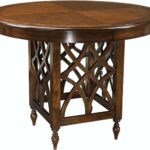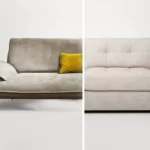If you’re in the market for new window treatments, don’t forget the curtain rods! They may just be curtains or accessories for drapes, but they can make a huge difference to the finished look of a window. Since some curtains and drapes are not compatible with certain types of curtain rods and curtain hardware, you should always buy curtains before curtain rods and before curtain hardware. Before purchasing a curtain rod, take the time to familiarize yourself with the different types of curtain rods and associated hardware. Read on to learn about the different types of curtain rods and how to use the right choice.
Table of Contents
Understanding the Types of Curtain Rods
1. Single Curtain Rod
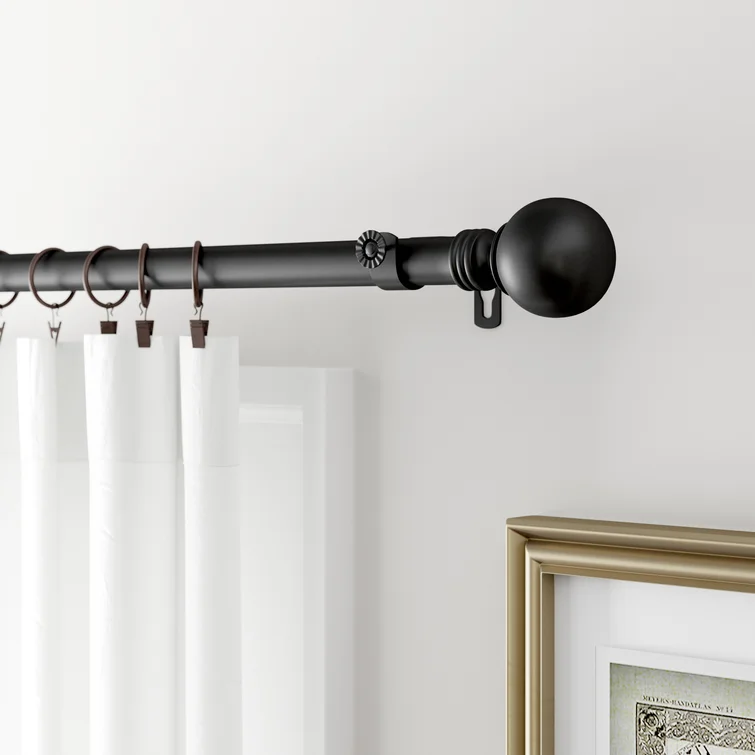
As you might guess from the name, this is just a single curtain rod made of wood or metal. These products come in a variety of lengths, shapes, and diameters, and the metal rods are often adjustable, allowing users to achieve the perfect fit. Single curtain rods are sometimes sold in sets with matching trim, curtain rings, and brackets.
Single curtain rods are versatile and can be used in every room. They can be found in designs and will complement almost every decorating scheme imaginable.
2. Wrapped Curtain Rod
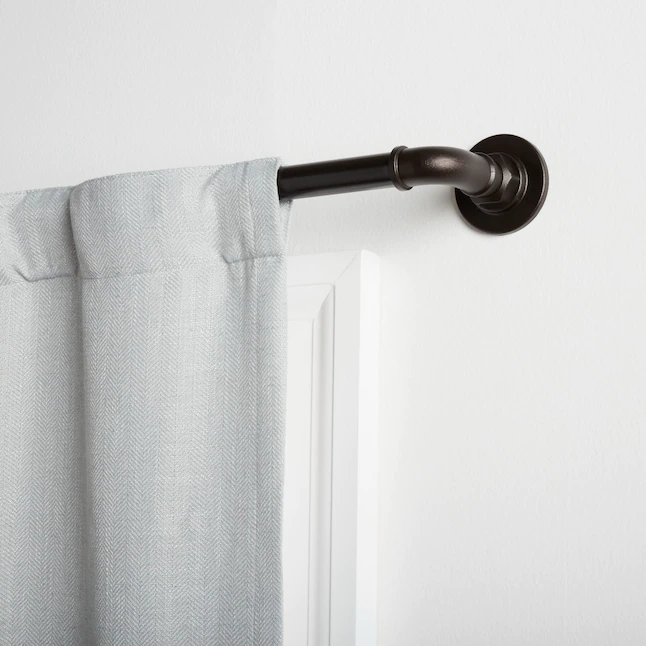
Also known as French rods, these curtain rods are bent at one end that is fixed to the wall, which helps block light at the end. On smaller windows, French poles generally do not require any brackets, but for larger windows, it may be necessary to install brackets in the middle of the pole.
Since wrapped curtain rods are so effective at shading light, especially when paired with blackout curtains, they are a popular choice for bedrooms
3. Double Curtain Rod
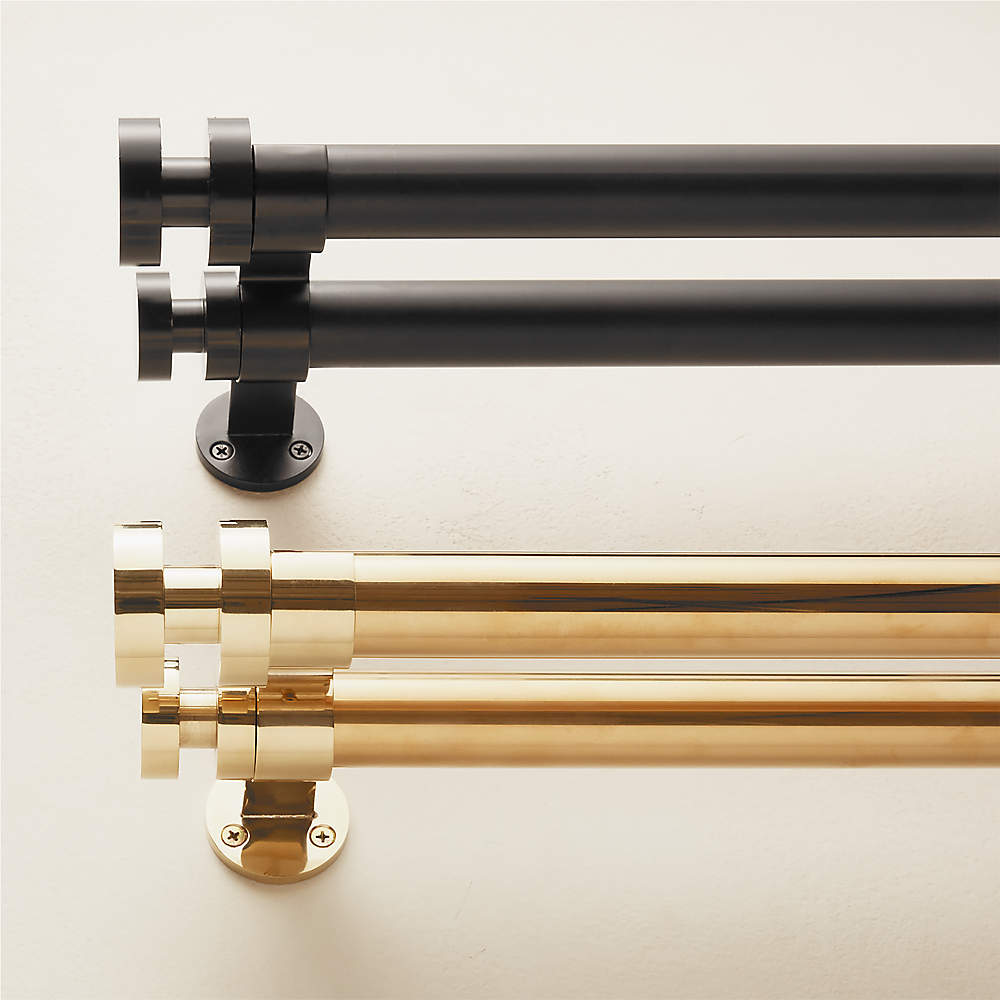
Many types of curtain rods are also available in double models. This includes decorating, traversing, wrapping, etc. Double curtain rods allow users to stack different types of curtains on top of each other. There are even three bracket curtain rods that can support three types of curtains at the same time.
Double and triple curtain rods are often used to add a layer of elegance or romance to a room, but can also be used to increase the versatility of window treatments. For example, many people use double curtain rods to place decorative drapery along the tops of the curtains, but they can also be used to install sheer curtains under heavier blackout curtains, adding privacy even when the room-dimming curtains are opened to let in sunlight.
4. Tension Curtain Rod
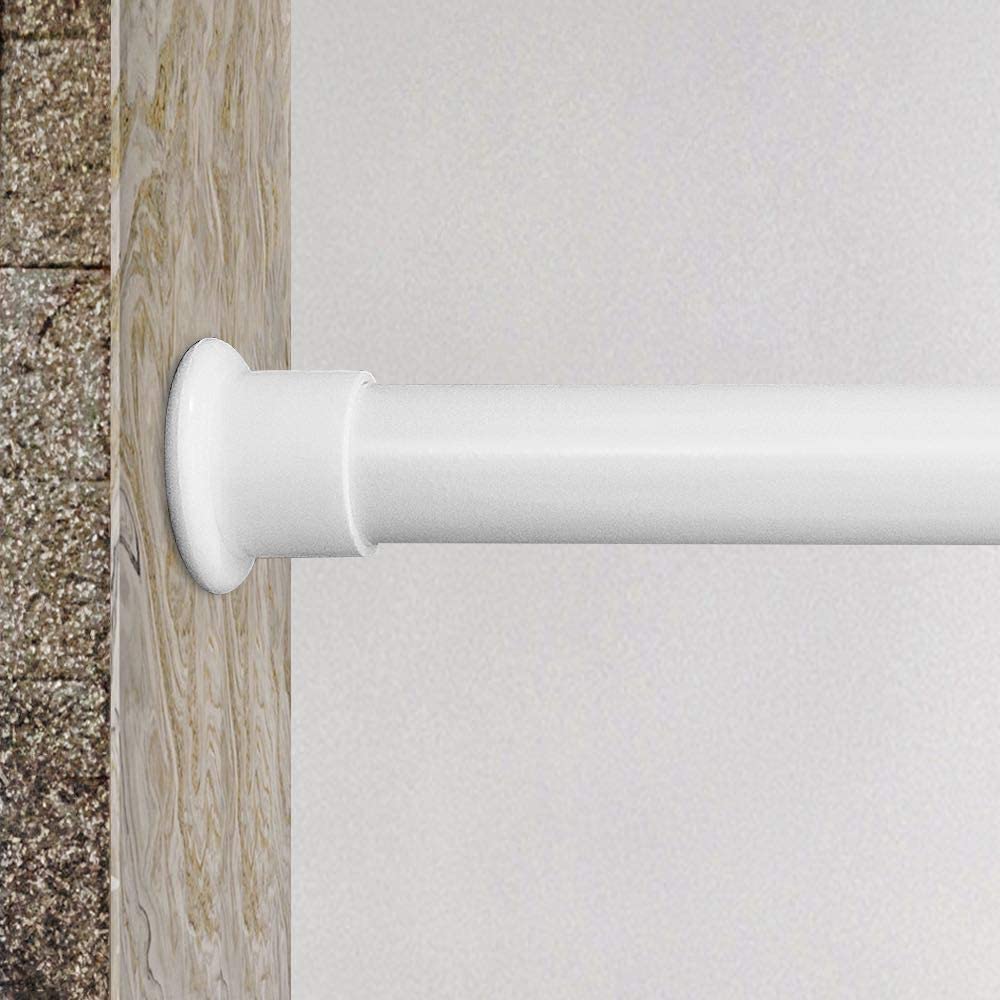
Tension curtain rods are a great option for those who rent or don’t want to drill into walls or window frames because they support themselves with pressure, which means they don’t use hardware at all. This is because they use a simple screw and spring system to create tension that holds them in the sash. The simplicity of the tie rod is its main selling point, as it can be used to install almost any window opening and can be removed and reinstalled as needed without any damage to the wall, although sometimes it may remove a small amount of paint, especially With the drawbar pulled when it is in place.
Tension curtain rods tend to have a bad reputation because people tend to associate them with cheap shower curtains and college dorms, but there are many more attractive designs these days that don’t look like what many people imagine when talking about Tension curtain rods Typical white pole with flared white end caps. Still, they have their downsides, most notably you can only use light curtains over them, as being too heavy can cause them to fall. Tie rods must also be used on windows that are supported by a sufficiently large sash. They are most commonly used in areas such as living rooms, family lounges, laundry rooms, kitchens, children’s lounges, and garages.
5. Concealed Curtain Rod
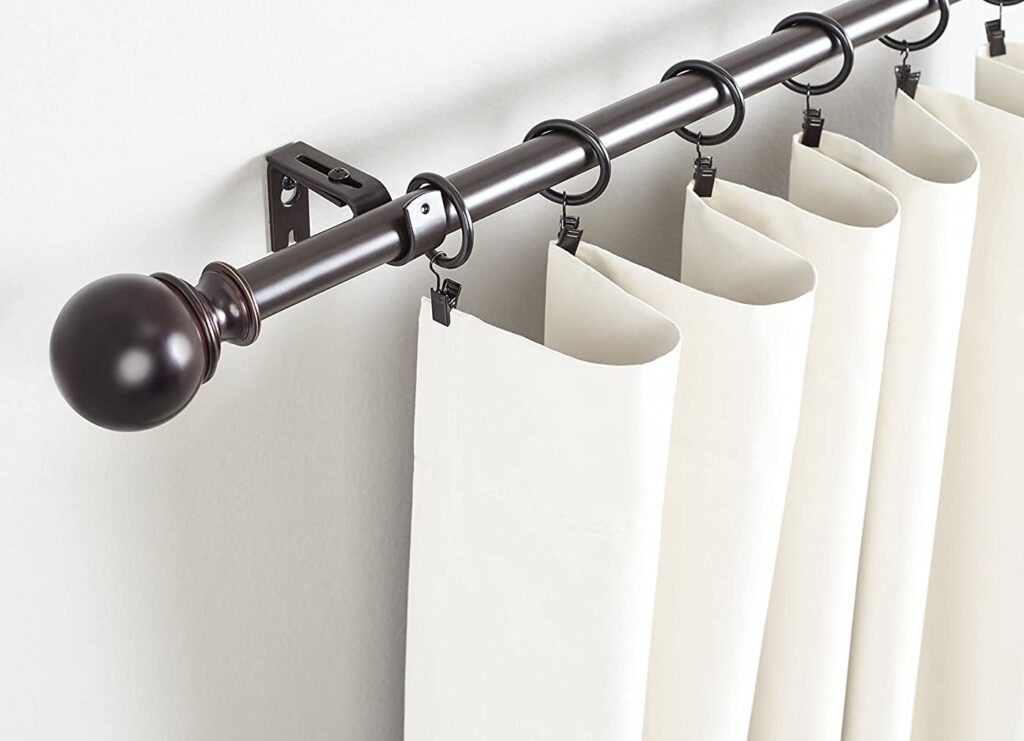
As the name suggests, a concealed curtain rod is a rod designed to never be seen under a curtain. One of the most common styles is the white metal lockstitch pole, a wrap-around pole with two thin, flat, interlocking pieces of metal. A wide pocket pole is essentially the same thing, only it is designed with wider arms and is the most commonly used shirt drapery. Some tie-rods with thin end caps can also be used as concealed curtain rods, and many sash rods can also be used as concealed curtain rods, such as those used to fasten curtains on French doors. Regardless of style, concealed curtain rods should only be used with window treatments that have rod pockets to fully cover the rod.
Because these curtain rods are meant to be hidden from view, they are usually best used in rooms where the curtains are normally closed. As an alternative, you can buy a double hidden curtain rod and use the valance on the outer rod to hide the underlying rod when the curtains are open.
6. Café Curtain Rod
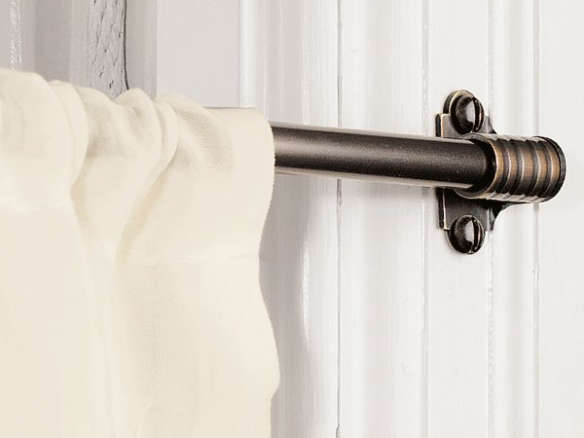
Cafe curtains are shorter curtains that cover only the bottom half of the window, making the window appear smaller and the whole room feel more comfortable. As a result, curtain rods designed specifically for these types of window treatments can look casual and somewhat unremarkable. Cafe curtain rods are small in diameter, usually round or fluted, with small, fine ends. While they can be found in a plethora of materials and finishes, they are often sold with brass finishes.
Read about: Dining Room Curtain Ideas-11 Best Ideas 2022 – Affordable Furniture Today
Because cafe curtain rods are supposed to look casual, they look especially good when paired with drawbar pockets, tab-top, or tie curtains. Their small diameter also means they can only be used with light curtains. These curtain rods are a popular choice in bathrooms because the lower half of the window is covered and provides privacy while light can still come in from the top. They are also common in rooms where people generally like to feel comfortable, such as kitchens, dining nooks, and laundry rooms.
7. Traverse Curtain Rod
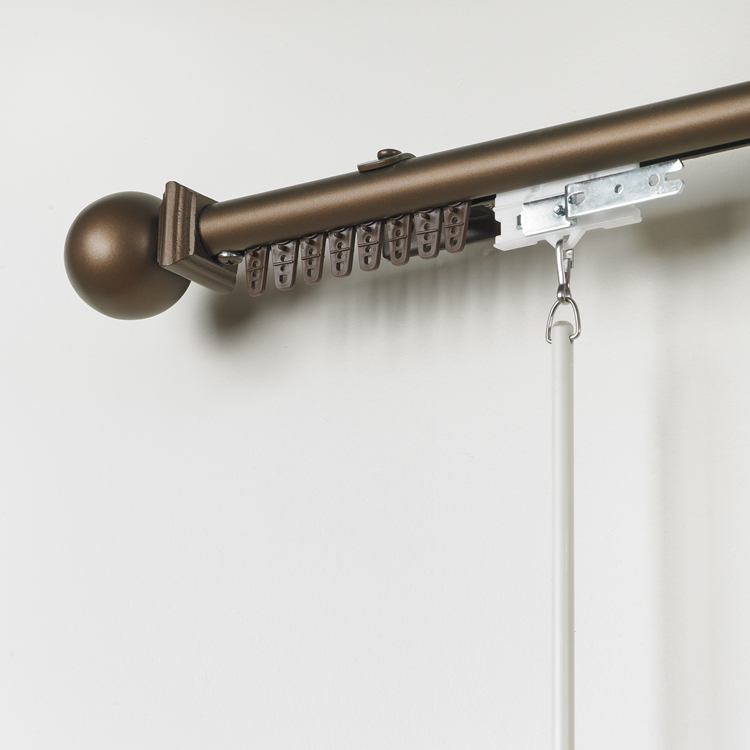
Technically, a traverse curtain rod isn’t a pole at all, it’s a metal track with curtain hooks attached to it. These tracks can be mounted on the ceiling or hung on the wall, and because they are screwed into the studs at regular intervals, they are especially strong, making them a great choice for heavy-duty curtains and allowing them to span great distances, making them They make a great choice for larger windows.
They can be opened by pulling the curtain along the track with a drawcord or lever, and some particularly high-end models can be operated remotely. They can even connect to your smart home system, which is great for extra wide windows. It’s worth mentioning those tie rods come in two-way (also called split-pull) and one-way models, which means they may open in the middle, extending the curtain in both directions from that point, or they may just follow the track move in one direction.
While most people think of a rail as looking like a basic metal track, they come in a variety of styles, some of which look like traditional metal or wooden curtain rods. Since the rails have built-in curtain hooks, they cannot be used with grommets or rod pocket curtains but should be used with flat or pleated designs.
Because the rails are designed to carry a lot of weight and span great distances, the rails are best used for large windows or sliding glass doors in the living room, kitchen, or dining room, but are also suitable for any room that requires heavy formal curtains.
8. Decorative Curtain Rod
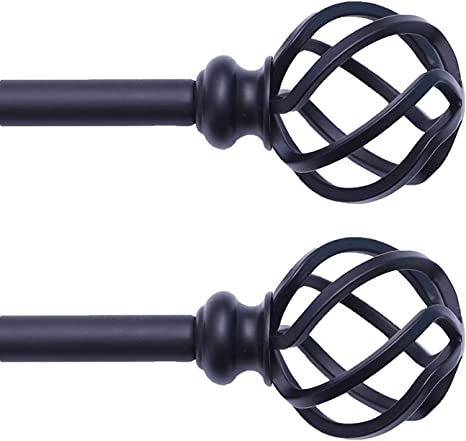
One type of eye-catching curtain rod is the decorative rod, which is specially designed to be seen by people to add an extra wow factor to a room. Decorative poles come in a wide variety of materials, colors, widths, and lengths, and they are often paired with decorative spires and are often set in decorative pyramids to further draw attention to their beauty. Common materials include wood, brass, brushed nickel, oiled bronze, wrought iron, and ash. These special bars are often expensive, and many are even custom-made.
Because decorative curtain rods are designed to be visible, they are best used in rooms frequented by guests, such as family rooms, living rooms, and dining rooms.
How To Choose Curtain Rods
- Step 1: Figure out how much weight you need to support
When choosing a curtain rod, the key is to consider how much weight it can hold. Heavier curtains are heavier than many filter and sheer curtains. If you have a heavy set of curtains, consider weighing them.
Divide the weight of the curtain by the approximate length of the curtain rod. This will give you an idea of how much weight the curtain rod needs to support per foot. Find information in your item details to see if the pole can handle this weight.
- Step 2: Choose the diameter of the curtain rod
Knowing the diameter of your curtain rod is important for several reasons. First, this will determine if the orientation of the curtain will fit the rod. You can learn more about certain titles in our curtain selection guide. Second, if the curtain rod is sold separately from its hardware, this will help you choose a curtain rod holder.
- Step 3: Choose the Width (or Length) of the Curtain Rod
To determine the optimal width for curtain rods, you need to measure the width of the window, including the sash or trim. Measure three times: once at the top of the window, once in the center of the window, and once near the bottom of the window. These measurements are likely to vary slightly. Use the largest of the three as the width of the window.
If you don’t have a lot of room on either side of your window, find a curtain rod that is the same width as the window. However, if space permits, we recommend that your curtain rods stick out five inches on either side of the window. This ensures that when the curtains are open, only a small portion of the window is still covered with fabric.
- Step 4: Buy the Correct Fasteners and Brackets (if necessary)
Many of our curtain rods come with all the brackets and fasteners you need. If you’re buying the tie rods separately, make sure you buy the brackets that fit their diameter, as well as the recommended size and quantity of screws and wall anchors.
- Step 5: Choose Your Style
It’s easy to think of curtain rods as a functional element of window treatment. However, they can be as stylish as your curtains. From finish to finish, there are so many aesthetic choices. Gold curtain rods are great for lavishly decorated rooms, while black curtain rods are a classic option that can go with anything from farmhouse style to mid-century modern. Meanwhile, silver or grey curtain rods are a more subtle option that works well in a children’s room or Scandinavian-style home. It’s also important to consider curtain rod accessories, which we’ll go into more detail below.
Curtain Rod Tips
- Before buying curtain rods, it is best to choose curtains first. Depending on the length, color, and weight of the curtains, you can choose thick, thin, or have a specific color or finish.
- For fixing curtain panels, tulle or draperies, use standard curtain rods, continental or tie rods.
- Choose a curtain rod that suits the personality of your room.
- For curtains that need to be pulled back and forth over wide windows, use rails.
- For layered treatments, you can install standard curtain rods and rails or a dual-rod configuration.
- Get curtain rods of the right length for your windows.
Choosing the Right Curtain Rods
Your curtains should help guide you in choosing the right room rod. The first thing to consider is the weight of the curtains. Heavy curtains require sturdy curtain rods, such as wood or metal straight or horizontal rods. To make sure the curtain rod is strong enough, divide the weight of the curtain by its length to find the weight per foot ratio and verify that the curtain rod is designed to handle that much weight. Keep in mind that longer curtain rods over 72 inches, in addition to the rails, require brackets in the middle, which means the curtains won’t be able to move back and forth at that point.
Also, consider the method of hanging the curtains. Curtains that require curtain rings are usually best used with straight rods, cross rods, or wrapping rods. For curtains with rod pockets, grommets, or lace-up tops, make sure the rod diameter isn’t too large. It’s also important to buy a bracket that’s wide enough for your pole, which is why you should buy hardware after you buy the pole.
Measure the window frame to find the proper curtain rod length. Unless the space is very comfortable, or you’re using drawbars, add 10 inches to the overall size so the curtains can open as wide as possible, maximizing your windows.
Conclusion
From modern curtain rods to brass curtain rods, there are a wide variety of curtain rod types and styles on the market. For many people, curtain rods and their accessories can be confusing. This article tells you 8 different types of curtain rods and how to choose, I hope it can help you.





